Creation of a vegetal acoustic barrier in the green area of the IES La Granja of Tarragona.
Agrotècnica del Segrià, in collaboration with social insertion companies, has carried out the project for the implementation of an acoustic plant barrier by planting a series of trees and shrubs in the green area located between the Tarragona to Reus motorway and the secondary school (IES) La Granja, with a budget of 277,794.37 €.
The area was unused and was used as a sporadic car park and looked like a wasteland with no vegetation inside except for a tree. There was also some deterioration of the pavement delimiting the site from the public space.
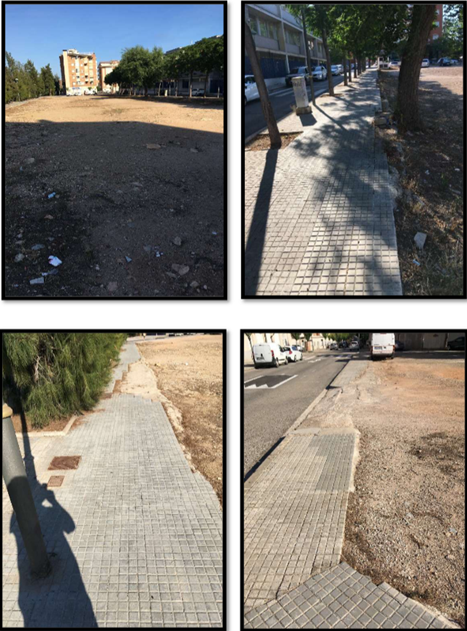
The aim of this project was to create a screen of vegetation to act as acoustic insulation from the sound waves of the traffic in front of the school’s façade, while at the same time leaving an area for walking and resting to enjoy the vegetation, as well as the delimitation of a “pipi can” area in the green zone behind the IES La Granja of Tarragona. The project has been used to repair the existing deteriorated areas and to give a better urban and landscape image to the surroundings.
The effectiveness of a barrier of this type is determined by its height and permeability. The most effective screens are those between 6 and 10 metres wide. Areas have been planted with planting frames simulating a natural forest, combining trees of different sizes and structures, to prevent the passage of acoustic waves towards the classrooms of the school.
The construction process has been accompanied by previous works such as the correct delimitation of the area of action and the necessary demolitions of the area. In order to condition the ground levels to favour sound absorption and at the same time achieve suitable slopes so as not to produce surface runoff, it has been necessary to move the earth, excavating and adding earth where necessary.
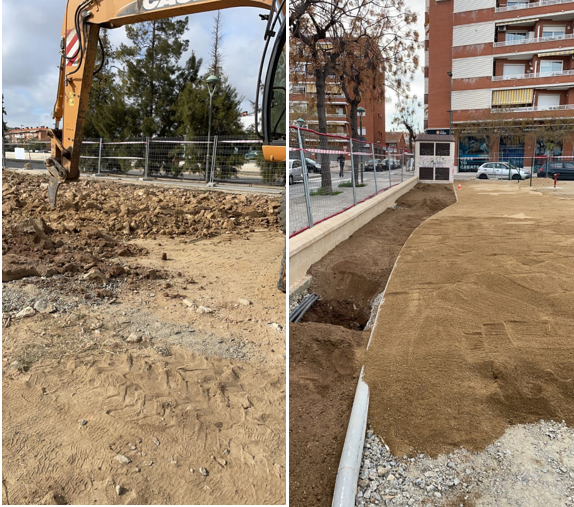
Work has been carried out to replace pieces of paving equal to that previously existing, with the laying of a pavement around the perimeter and the construction of a buried pit to house the irrigation control system. On the side of the Institute, a 40 cm high concrete block wall has been built. All this, with the corresponding installation of street lighting and the installation of a drainage network for the evacuation of rainwater.
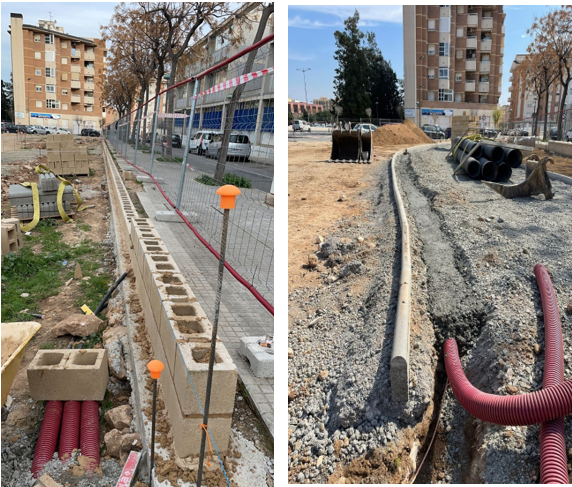
The project has had an important phase in the field of landscaping; the parterre behind the concrete block wall has been planted with a single type of tree, seeking uniformity of linear street trees, Platanus hispanica. At the foot of these trees, groups of ground cover plants (Lotus sp.) have been planted. The rest of the trees have been combined in a mixed manner, forming groups as if it were a naturally growing forest. In addition, a biotrunk has been installed to favour the habitat of insects and pollinators.
As for the urban furniture, two different areas have been created, one for walking and resting for pedestrians and the other more reserved and closed off around the perimeter for “pee-pee-can”. Benches, litter bins, bicycle racks and fountains have been installed with an optimal distribution for their service. Eight bird nest boxes and two bat nest boxes have also been supplied to the City Council, which have been installed in different parts of the city.
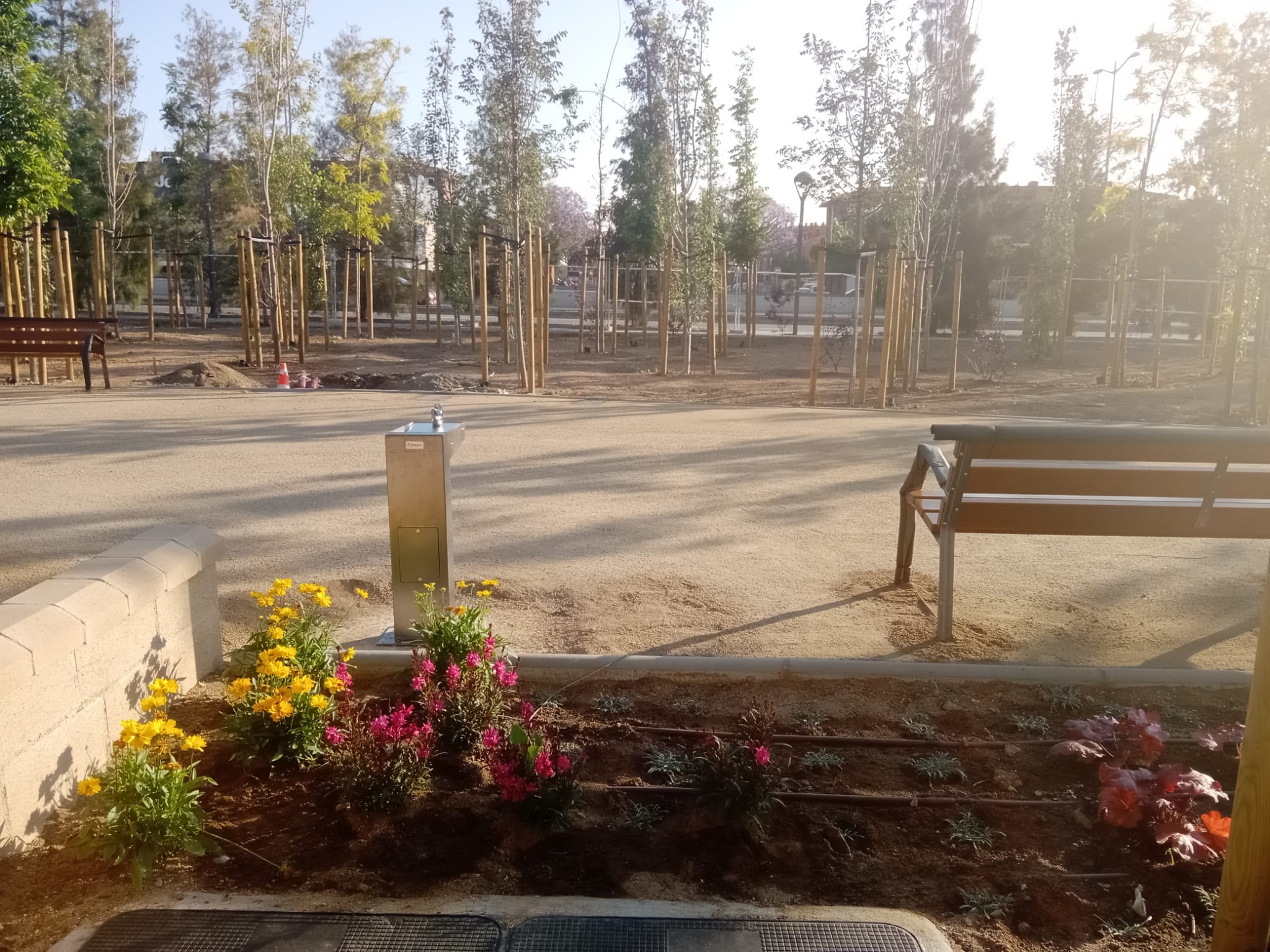
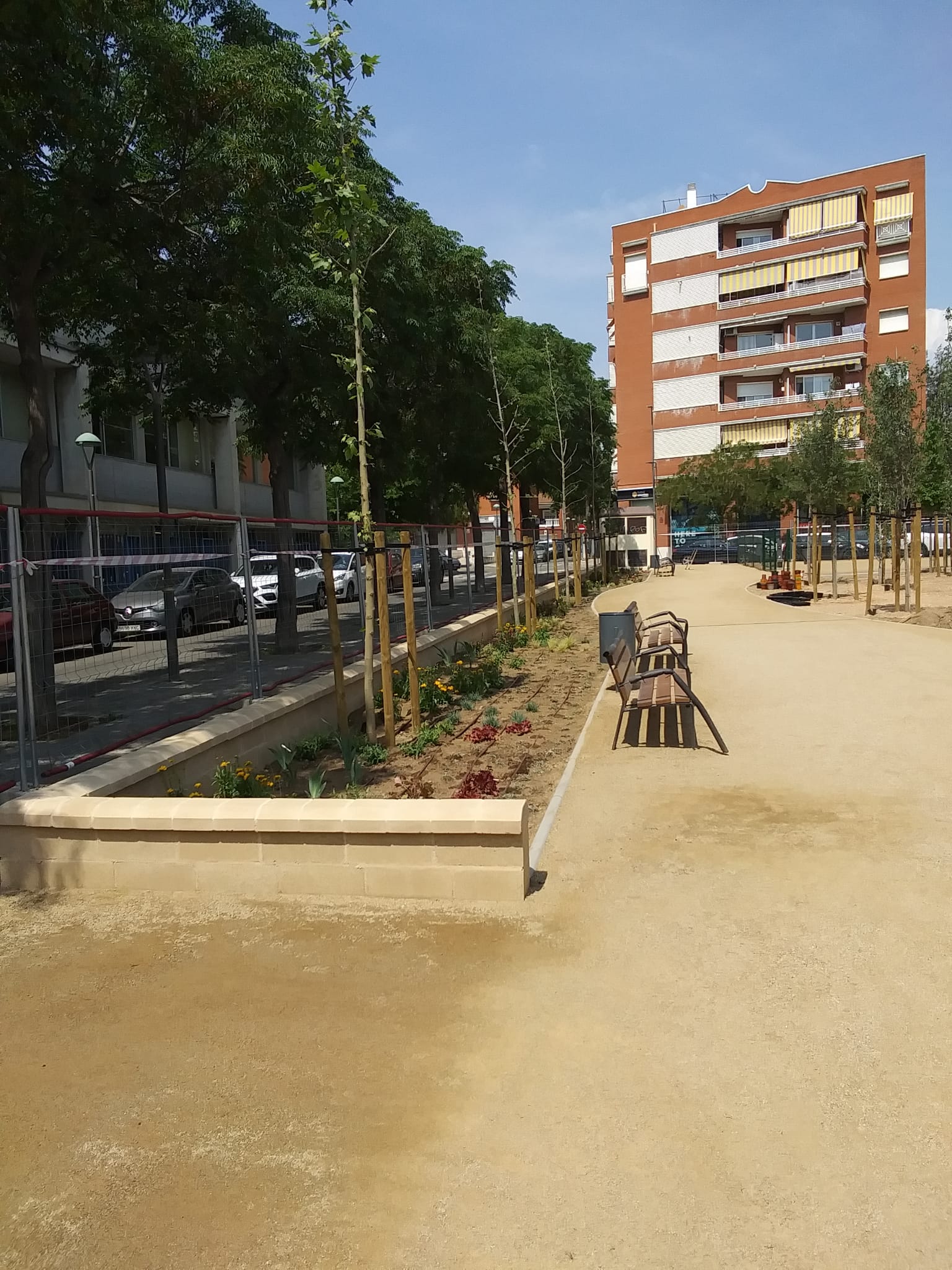
The improvements and actions carried out in the area have brought many benefits, such as:
1. Reduction of the noise level produced by the traffic of the motorway and that favours the quality of an environment for study and educational concentration.
2. Improving the image of the area with the landscape quality of the green area, without any artificial screens of concrete or any other hard element.
3. To improve the view of the landscape from inside the IES through the windows, making it difficult to see the motorway from any point of the Institute.
4. To maintain the environmental and soil humidity in the area of influence.
5. Obtaining a large shaded area, especially in summer, for the rest of the citizens.
6. Important windbreak effect towards the entire north façade of the IES and towards the rest of the green area, which will be much more protected.
7. Effect on soil humidity.
8. The roots of the trees help to maintain the porous subsoil, where water will penetrate more easily and be retained for a longer period of time.
9. As the screen is quite relevant in terms of dimensions, it can become a refuge for fauna, which can help to control many of the pests in our gardens in a natural way.

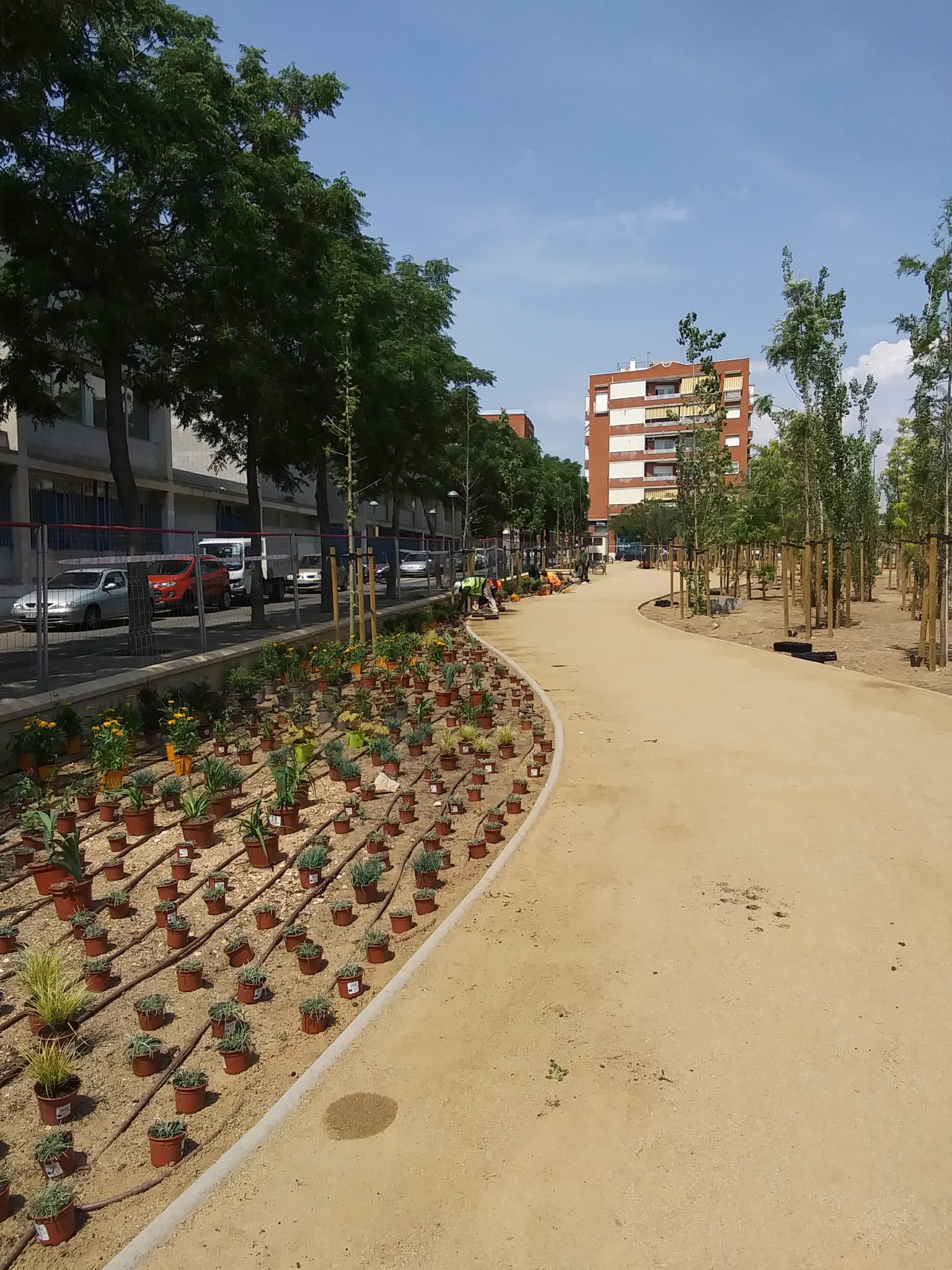

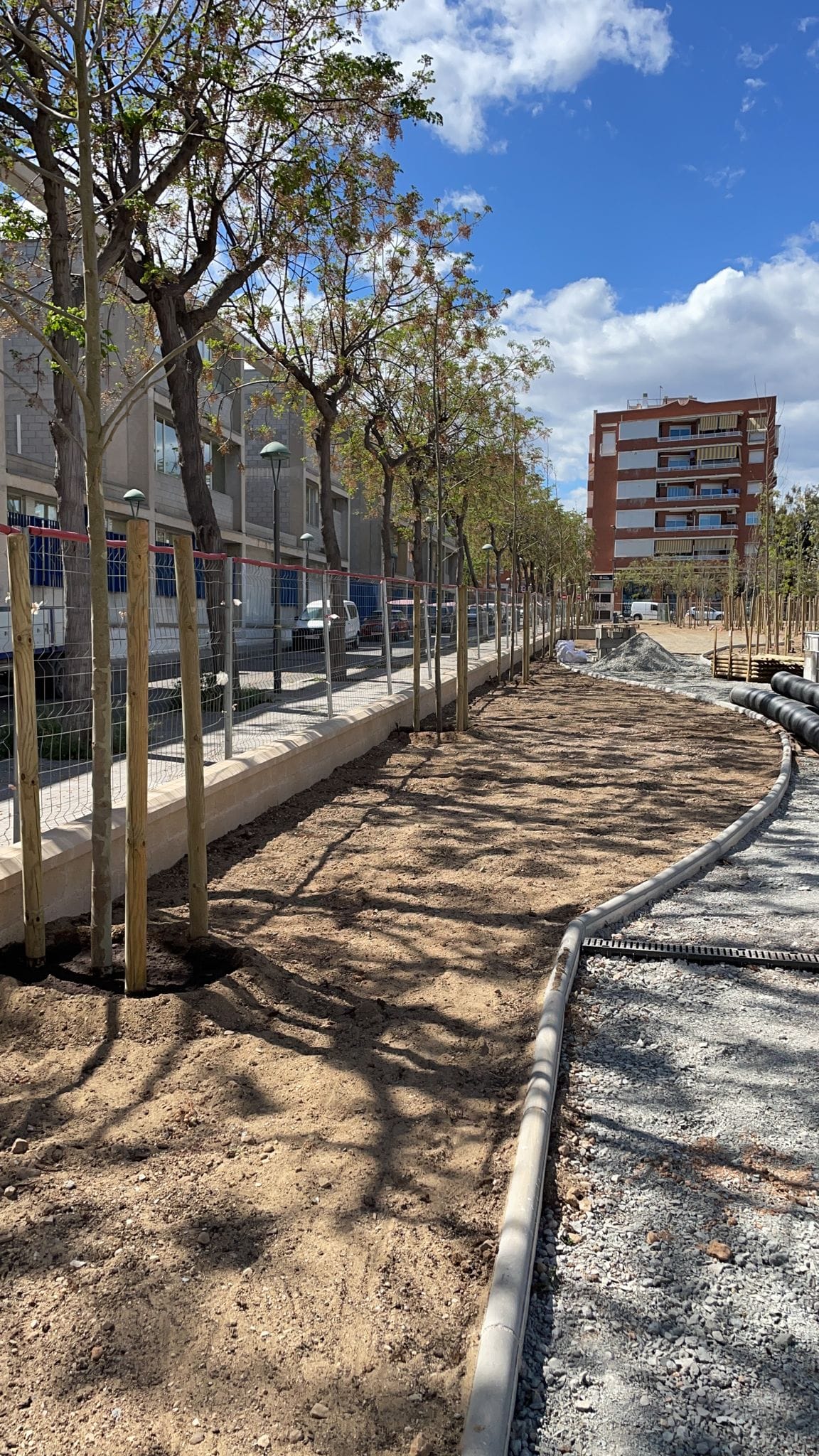

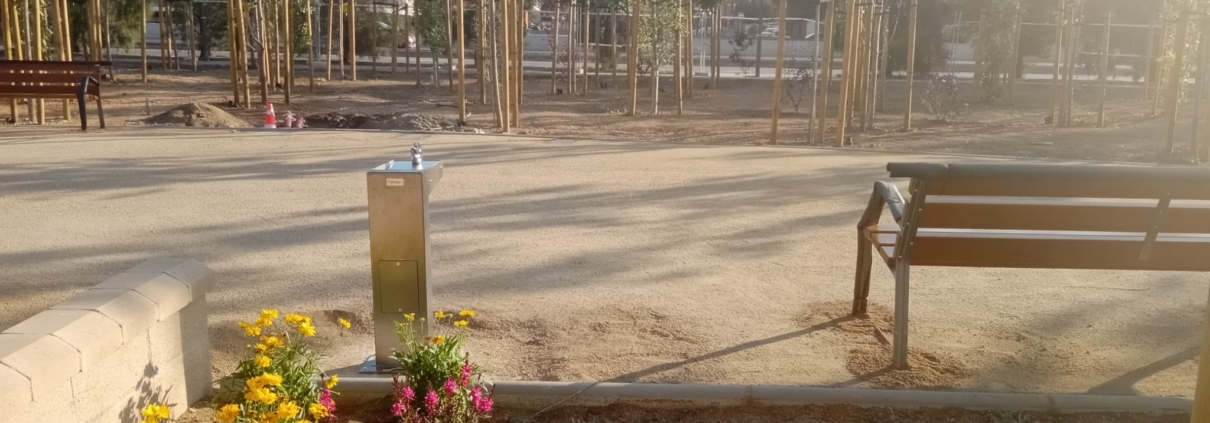




Leave a Reply
Want to join the discussion?Feel free to contribute!